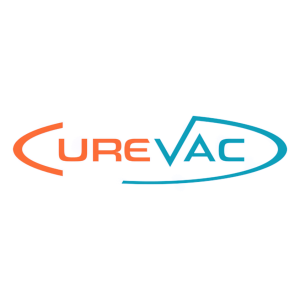CureVac Announces Promising Phase 2 Interim Data from Seasonal Influenza Vaccine Development Program in Collaboration with GSK
- Seasonal flu vaccine candidate boosted antibody titers at all dose levels and for all encoded seasonal influenza strains across younger and older adults
- Potentially differentiated, multivalent candidate encodes antigens matched to all four WHO-recommended flu strains
- For influenza A strains, geometric mean titers numerically exceeded those elicited by the licensed comparator vaccines consistently across all tested dose levels and age groups
- For influenza B strains, geometric mean titers were lower than those elicited by the licensed comparator vaccines, in line with expectations and other initial mRNA-based clinical flu development programs
- Further optimizations to enhance immune responses against influenza B strains will be tested in additional Phase 2 study
- Candidate showed acceptable safety profile, confirming previous findings that the proprietary platform elicits strong overall antibody titers at well-tolerated dose levels
TÜBINGEN, GERMANY and BOSTON, MA / ACCESSWIRE / April 4, 2024 / CureVac N.V. (Nasdaq:CVAC) ("CureVac"), a global biopharmaceutical company developing a new class of transformative medicines based on messenger ribonucleic acid ("mRNA"), today announced interim data from an ongoing Phase 2 part of the combined Phase 1/2 study of its seasonal influenza vaccine candidate, conducted in collaboration with GSK. The multivalent candidate was selected from a comprehensive Phase 1 part, which tested vaccine candidates with up to eight separate mRNA constructs per candidate. It was designed for broad antigen coverage, encoding antigens matched to all four WHO-recommended flu strains.
Results from the planned interim analysis showed that the multivalent vaccine candidate using CureVac's proprietary second-generation mRNA backbone boosted antibody titers against all encoded flu strains and across all age groups and tested dose levels, including the lowest tested dose. The vaccine candidate was shown to have an acceptable safety and tolerability profile, with the majority of solicited adverse events reported as either grade 1 (mild) or grade 2 (moderate) within seven days of dosing. The results confirm previous findings that the platform elicits strong overall antibody titers at well-tolerated dose levels.
Among younger and older adults, geometric mean titers generated by the vaccine candidate against influenza A strains numerically exceeded the geometric mean titers of the licensed comparator vaccines consistently across all tested dose levels. For influenza B strains geometric mean titers were lower than those elicited by the licensed comparator vaccines across both age groups and tested dose levels. Targeted optimizations to further improve immune responses against influenza B strains will be tested in an additional Phase 2 study.
"The Phase 2 interim data show that CureVac's highly effective and flexible mRNA technology platform puts us on the right track to advance our joint seasonal influenza vaccine program," said Dr. Myriam Mendila, Chief Development Officer of CureVac. "Results regarding influenza A strains were strong. Immunogenicity for B strains was in line with our expectations also in view of other initial mRNA-based clinical flu development programs. We are confident that planned optimizations will improve performance against these historically challenging influenza strains."
The Phase 2 dose-confirmation study assesses the reactogenicity, safety, and immunogenicity of different dose levels of a modified, multivalent vaccine candidate, encoding antigens matched to all four WHO-recommended flu strains. Reactogenicity, safety, and immunogenicity were assessed in 480 healthy younger adults aged 18 to 64 and 480 healthy older adults aged 65 to 85. In each age group, three different dose levels were tested in comparison to an age-appropriate, licensed comparator vaccine. For younger adults, immune responses were compared to a standard dose seasonal vaccine. For older adults, immune responses were compared to a high dose seasonal flu vaccine.
About CureVac
CureVac (Nasdaq:CVAC) is a global biopharmaceutical company in the field of messenger RNA (mRNA) technology, with more than 20 years of expertise in developing, optimizing, and manufacturing this versatile biological molecule for medical purposes. The principle of CureVac's proprietary technology is the use of optimized mRNA as a data carrier to instruct the human body to produce its own proteins capable of fighting a broad range of diseases. In July 2020, CureVac entered in a collaboration with GSK to jointly develop new products in prophylactic vaccines for infectious diseases based on CureVac's second-generation mRNA technology. This collaboration was later extended to the development of second-generation COVID-19 vaccine candidates, and modified mRNA vaccine technologies. Based on its proprietary technology, CureVac has built a deep clinical pipeline across the areas of prophylactic vaccines, cancer therapies, antibody therapies, and the treatment of rare diseases. CureVac N.V. has its headquarters in Tübingen, Germany, and has more than 1,100 employees across its sites in Germany, the Netherlands, Belgium, Switzerland, and the U.S. Further information can be found at www.curevac.com.
CureVac Media Contact
Patrick Perez, Junior Manager Public Relations
CureVac, Tübingen, Germany
T: +49 7071 9883-1831
patrick.perez@curevac.com
CureVac Investor Relations Contact
Dr. Sarah Fakih, Vice President Corporate Communications and Investor Relations
CureVac, Tübingen, Germany
T: +49 7071 9883-1298
M: +49 160 90 496949
sarah.fakih@curevac.com
Forward-Looking Statements CureVac
This press release contains statements that constitute "forward looking statements" as that term is defined in the United States Private Securities Litigation Reform Act of 1995, including statements that express the opinions, expectations, beliefs, plans, objectives, assumptions or projections of CureVac N.V. and/or its wholly owned subsidiaries CureVac SE, CureVac Manufacturing GmbH, CureVac Inc., CureVac Swiss AG, CureVac Corporate Services GmbH, CureVac RNA Printer GmbH, CureVac Belgium SA and CureVac Netherlands B.V. (the "company") regarding future events or future results, in contrast with statements that reflect historical facts. Examples include discussion of the potential efficacy of the company's vaccine and treatment candidates and the company's strategies, financing plans, growth opportunities and market growth. In some cases, you can identify such forward-looking statements by terminology such as "anticipate," "intend," "believe," "estimate," "plan," "seek," "project," or "expect," "may," "will," "would," "could," "potential," "intend," or "should," the negative of these terms or similar expressions. Forward-looking statements are based on management's current beliefs and assumptions and on information currently available to the company. However, these forward-looking statements are not a guarantee of the company's performance, and you should not place undue reliance on such statements. Forward-looking statements are subject to many risks, uncertainties and other variable circumstances, including negative worldwide economic conditions and ongoing instability and volatility in the worldwide financial markets, ability to obtain funding, ability to conduct current and future preclinical studies and clinical trials, the timing, expense and uncertainty of regulatory approval, reliance on third parties and collaboration partners, ability to commercialize products, ability to manufacture any products, possible changes in current and proposed legislation, regulations and governmental policies, pressures from increasing competition and consolidation in the company's industry, the effects of the COVID-19 pandemic on the company's business and results of operations, ability to manage growth, reliance on key personnel, reliance on intellectual property protection, ability to provide for patient safety, fluctuations of operating results due to the effect of exchange rates, delays in litigation proceedings, different judicial outcomes or other factors. Such risks and uncertainties may cause the statements to be inaccurate and readers are cautioned not to place undue reliance on such statements. Many of these risks are outside of the company's control and could cause its actual results to differ materially from those it thought would occur. The forward-looking statements included in this press release are made only as of the date hereof. The company does not undertake, and specifically declines, any obligation to update any such statements or to publicly announce the results of any revisions to any such statements to reflect future events or developments, except as required by law.
For further information, please reference the company's reports and documents filed with the U.S. Securities and Exchange Commission (SEC). You may get these documents by visiting EDGAR on the SEC website at www.sec.gov .
View the original press release on accesswire.com









